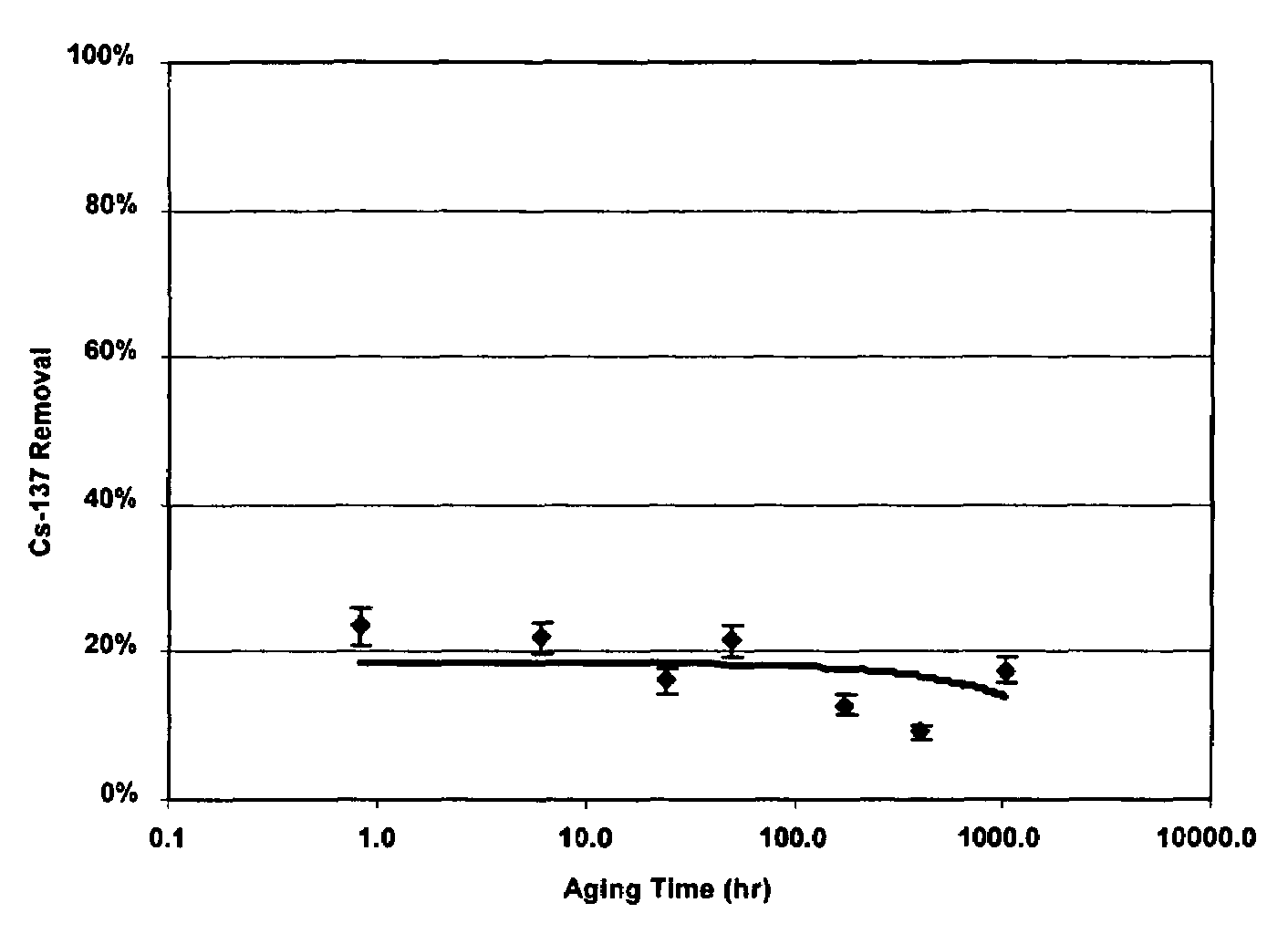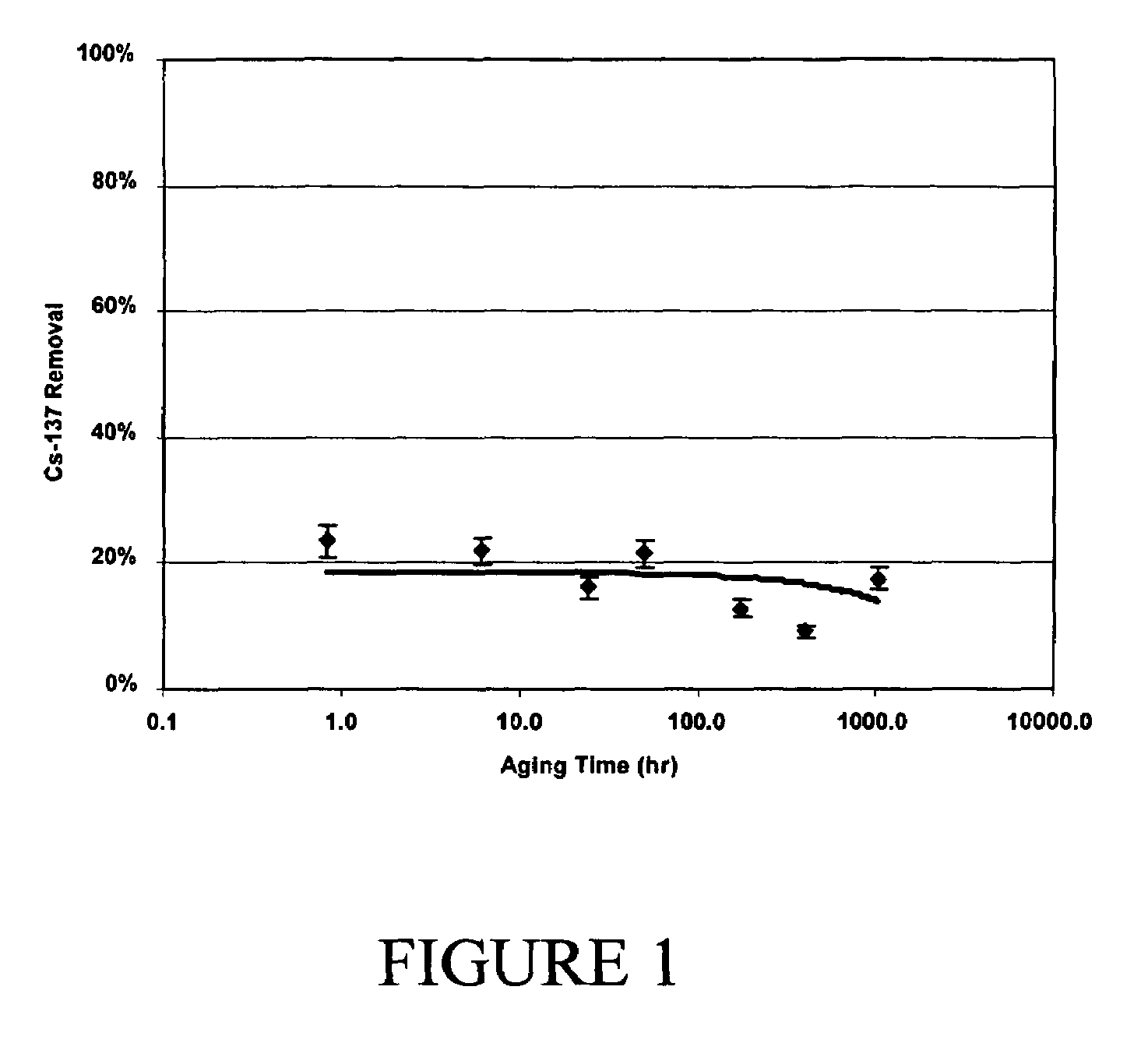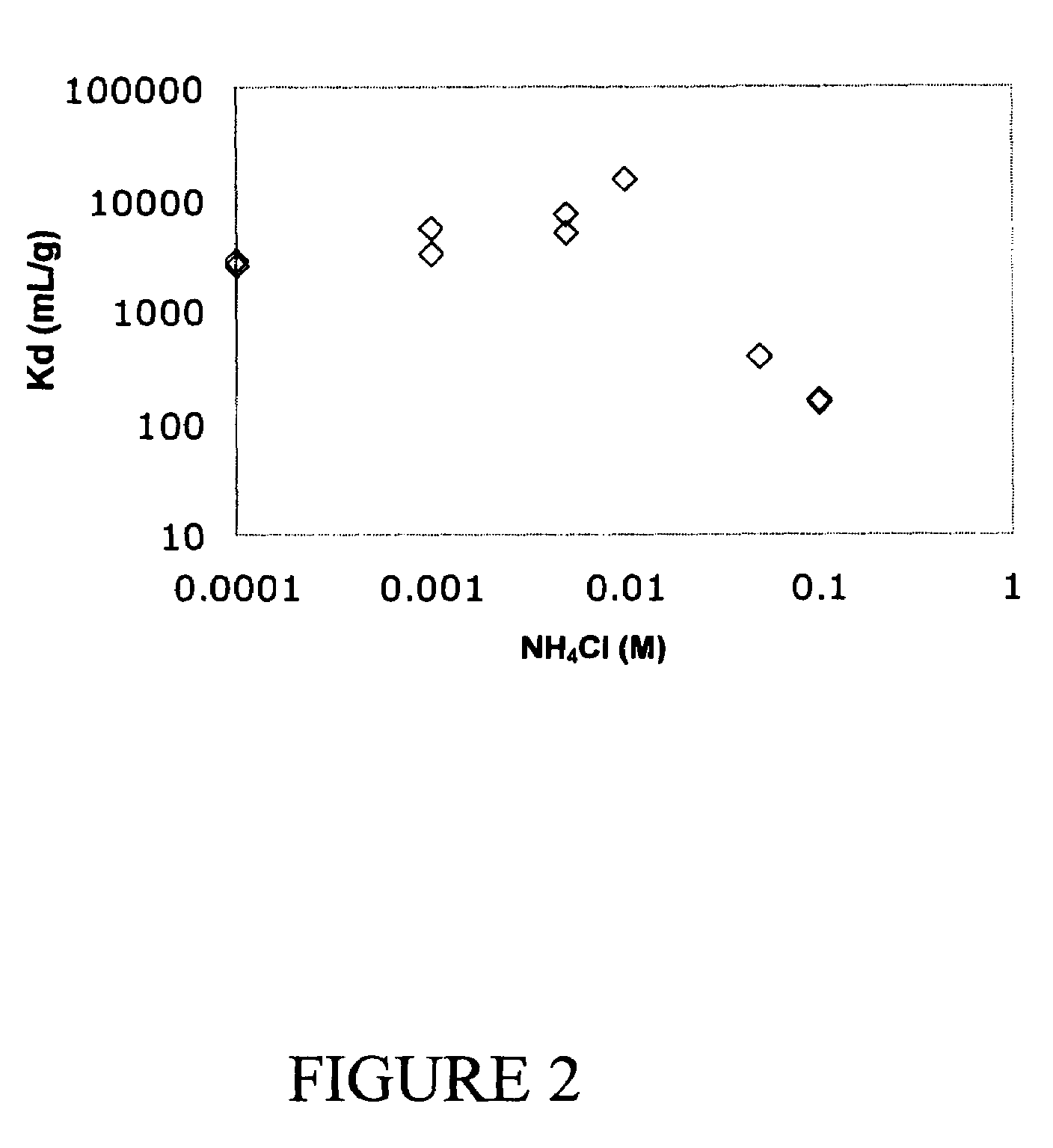Composition suitable for decontaminating a porous surface contaminated with cesium
a technology of cesium and porous surface, applied in chemical/physical processes, nuclear engineering, water/sewage treatment by ion exchange, etc., can solve problems such as death or injury of dirty bombs
- Summary
- Abstract
- Description
- Claims
- Application Information
AI Technical Summary
Benefits of technology
Problems solved by technology
Method used
Image
Examples
example 1
[0017]The effectiveness of various ionic wash solutions was tested on contaminated concrete constituents: aggregate (fine and coarse sized) and cement material. The commercially available concrete mix materials were size fractioned prior to testing: fine aggregate, 0.15-2 mm; coarse aggregate, >2 mm; and cement pieces, >2 mm (prepared from Portland cement powder mixed with deionized water and aged for at least 30 days). The aggregate was shown to be the most difficult to decontaminate and the majority of testing focused on removal from coarse aggregate. In addition, no significant difference in decontamination was observed based upon surface area between coarse and fine aggregate. The coarse aggregate, according to the literature (Hietanen, et al., Mat. Res. Soc. Symp. Proc. Vol. 44, 1985), binds Cs much more effectively than the cement, so we chose to concentrate our testing on it. Testing the wash solution effectiveness on the coarse aggregate minimized interference from structure...
example ii
[0021]Two step wash solution / polymer gel decontamination application. Concrete monoliths were contaminated with CsCl stock solution (20 μCi / L) as described above. The monoliths were allowed to remain contaminated for periods ranging from 1 hour to 48 hours before treatment.
[0022]The wash solution was applied to the surface of the concrete monoliths. After a period of up to 60 min, the polymer was applied the surface at > 1 / 16″ or preferably ⅛″ thick. The gel was allowed to react for up to 1 hr before removing. The monoliths were then analyzed by gamma counting for Cs-137 contamination.
[0023]The gel consists of a 2-5% (3% preferable) gel solution where the gel is comprised of 99% of cross-linked polymer (70% polyacrylamide / 30% polyacrylate) and 1% of linear polymer (70% polyacrylamide / 30% polyacrylate). The polymer powder is hydrated in a solution consisting of ammonium chloride or ammonium dihydrogen phosphate or other ammonium salts (<0.01-1.0 M). Dry polymer mesh size is not impor...
example iii
[0025]The following tests were designed to evaluate the sorption of cesium onto crystalline silicotitanate (CST).
[0026]The crystalline silicotitanate (IONSIV-IE-910, Universal Oil Products) was used without further purification. All chemicals were reagent grade. Cesium-137 was obtained from house stock and measured by ICP-MS and gamma-ray spectroscopy for purity.
Cesium Sorption
[0027]We prepared wash solutions for 137Cs sorption samples and calibrated pipettes to the specified volume. We then placed 0.1 grams of crystalline silicotitanate (CST) in each test tube and added 9.0 mL of wash solution to each test tube. Each test tube was capped and gently dispersed. We added 150 γL 137Cs stock solution to each test tube, capped the test tubes, and gently dispersed the solution. The timer was started once 137Cs was added to the solution. The 137Cs was left on contact for indicated contamination times. The test tubes were centrifuged for five minutes at maximum rpm. We took duplicate 75 γL ...
PUM
| Property | Measurement | Unit |
|---|---|---|
| size fractioned | aaaaa | aaaaa |
| time | aaaaa | aaaaa |
| grain size | aaaaa | aaaaa |
Abstract
Description
Claims
Application Information
 Login to View More
Login to View More - R&D
- Intellectual Property
- Life Sciences
- Materials
- Tech Scout
- Unparalleled Data Quality
- Higher Quality Content
- 60% Fewer Hallucinations
Browse by: Latest US Patents, China's latest patents, Technical Efficacy Thesaurus, Application Domain, Technology Topic, Popular Technical Reports.
© 2025 PatSnap. All rights reserved.Legal|Privacy policy|Modern Slavery Act Transparency Statement|Sitemap|About US| Contact US: help@patsnap.com



